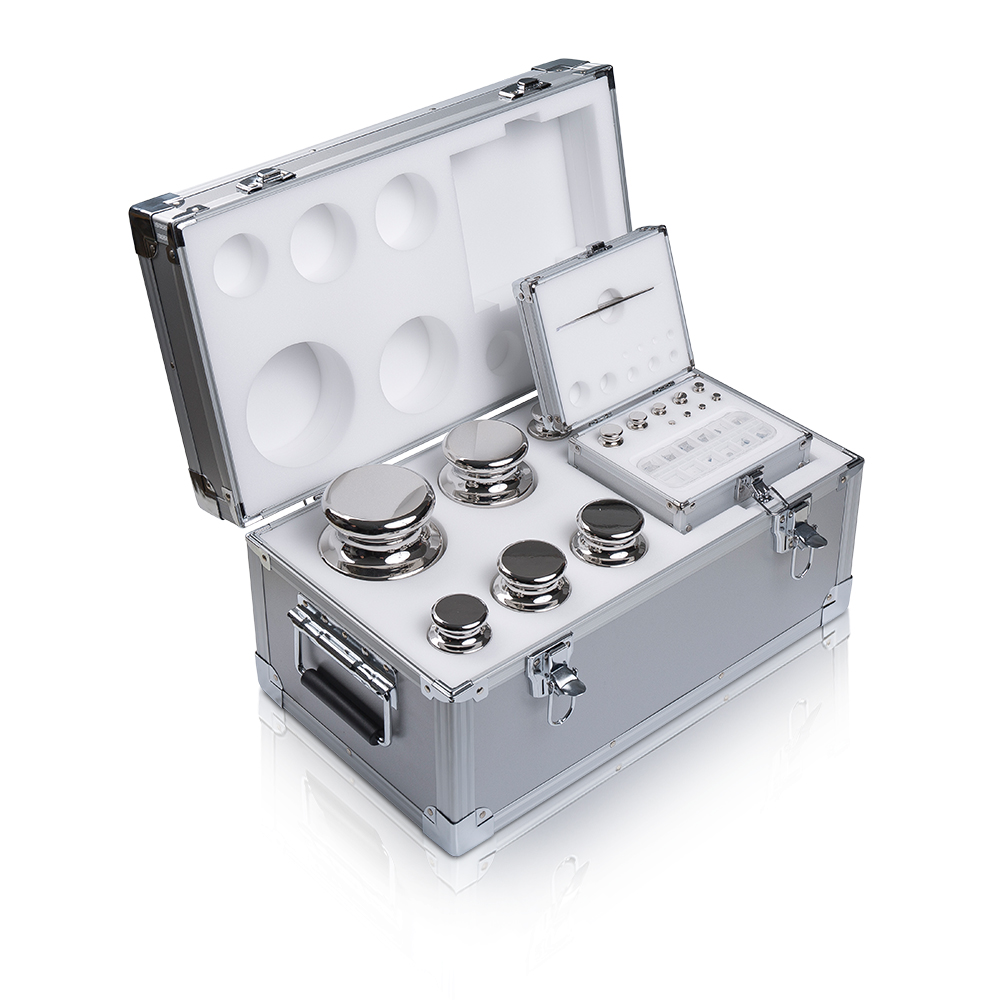The material selection of Laboratory Calibration Weights has a crucial impact on their long-term stability and accuracy, because the characteristics of the material directly determine the performance of the weight in terms of wear resistance, corrosion resistance, thermal expansion, etc., which affects its reliability and accuracy in long-term use. The following is an analysis of the impact of several common materials on the stability and accuracy of weights:
1. Stainless steel material
Advantages:
Strong corrosion resistance: Stainless steel is a very corrosion-resistant material that can maintain high stability in environments such as moisture and chemical gases, and is particularly suitable for use in relatively harsh environments.
Good wear resistance: Stainless steel has a high hardness and can effectively resist wear, keep the surface smooth, and avoid weight deviation caused by wear.
Stability and accuracy: Stainless steel has a low thermal expansion coefficient, and its size changes less when the temperature changes, so it has less impact on accuracy and is suitable for laboratories with high precision requirements.
Disadvantages:
Compared to some special alloys, stainless steel may have a lower density, so when very high density weights are required, it may not be as suitable as cast iron or copper alloys.
If high-grade stainless steel (such as 304, 316, etc.) is not used, it may be affected by corrosion in acidic or alkaline environments, resulting in reduced accuracy.
2. Cast iron material
Advantages:
Low cost: Cast iron is a relatively low-cost material and is suitable for larger weights.
Higher density: Cast iron has a higher density, which makes it more stable over a larger weight range and can maintain accuracy for a longer time.
Wear resistance: Cast iron has moderate hardness and slow surface wear, making it suitable for occasions that are not frequently moved.
Disadvantages:
Susceptible to corrosion: Cast iron is highly sensitive to humidity, oxygen and certain chemicals, and is prone to rust. Long-term exposure to air may cause it to lose accuracy, especially in humid or acidic environments.

Thermal expansion: Cast iron has a large thermal expansion coefficient, so temperature changes may cause changes in the size of the weight, affecting the measurement accuracy.
3. Copper alloy material
Advantages:
Good stability: Copper alloys (such as brass) have good stability and a low thermal expansion coefficient, and can maintain high accuracy over a large temperature range.
Strong corrosion resistance: Copper alloys are more corrosion resistant than pure copper, especially in wet environments, and can maintain a longer service life.
Higher density: Copper alloys have a higher density and are suitable for manufacturing medium to heavy weights.
Disadvantages:
Higher cost: Copper alloys are relatively expensive, so they are not often used to make low-precision weights.
Easy to oxidize: Copper alloys may oxidize under the action of oxygen, especially when exposed to air, and the oxide layer may affect the weight stability of the weight. For this reason, regular maintenance and cleaning are usually required.
4. Tungsten alloy material
Advantages:
Very high density: Tungsten alloy has a very high density, which can make small volume and large weight. This is particularly important in applications that require high precision and light weight.
Extremely low thermal expansion coefficient: Tungsten alloy reacts very little to temperature changes, has almost no thermal expansion, and can maintain accuracy over a wide temperature range.
Disadvantages:
Expensive cost: Tungsten alloy is very expensive to produce, so it is not common in low-cost applications.
Difficult to process: Due to the high hardness of tungsten alloy, it is relatively difficult to process, so the manufacturing process is more complicated when manufacturing weights with high precision requirements.
5. Aluminum alloy material
Advantages:
Lightweight and easy to operate: Aluminum alloy is lighter than stainless steel and cast iron, so its lightness makes it easier to operate in applications that require frequent movement.
Good corrosion resistance: Aluminum alloy has strong corrosion resistance, especially in dry environments, and can maintain stability for a long time.
Small thermal expansion: Aluminum alloy has a small thermal expansion coefficient and can maintain good accuracy within a certain temperature range.
Disadvantages:
Low strength: Aluminum alloy has low strength and hardness, and is easily affected by physical collision, wear, etc., and the accuracy may be affected.
Low density: Compared with cast iron and copper alloys, aluminum alloys have a lower density, so a larger volume may be required when manufacturing large mass weights.
6. Glass or ceramic material
Advantages:
Extremely strong corrosion resistance: Glass and ceramics have strong chemical corrosion resistance and can remain stable in strong acid, strong alkali and other environments.
Low thermal expansion coefficient: These materials have a very low thermal expansion coefficient, which is very suitable for high-precision weights that need to be used in extreme temperature conditions.
Disadvantages:
High brittleness: Glass and ceramics are fragile and may be damaged by collisions or falls, and are not suitable for high-intensity operating environments.
Lower density: Compared with metal materials, glass and ceramics have lower density and may require a larger volume to achieve the same weight, affecting the convenience of use.
The right material selection can effectively extend the service life of the weight and ensure the accuracy and reliability of laboratory measurement results.

 English
English















